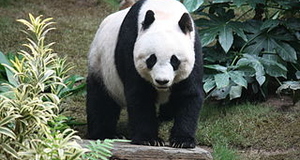From Earth Common Journal VOL. 3 NO. 1Dian Fossey's Controversial "Active Conservation" Proves Useful in Increasing Mountain Gorilla AwarenessRelevant Conservation SocietiesAs a result of the death of Digit, Dian Fossey's favorite gorilla, the Digit fund was established in 1978 (Cara, 2007). This fund became a reality as Fossey carried out a series of lectures around the world, concerning the mountain gorillas. It now holds the title of the Dian Fossey Gorilla Fund and is sponsored by the Morris Animal Foundation of Englewood, Colorado. Today, there are daily patrols which monitor the health and safety of the gorillas. These daily patrols are done thanks to the government of Rwanda and the general public contributions, the Digit Fund, the Mountain Gorilla Project, the Fauna and Flora Preservation Society of Great Britain, and the World Wide Fund for Nature (Hayes, 1990). Guards remove close to 1,000 snares each year and help to bring poachers to justice (Dian Fossey Gorilla Fund International). Karisoke, supported by the Dian Fossey Gorilla Fund, has established relations with many of the communities surrounding the park. It helps to run many local health and education programs, which includes treating intestinal parasites, providing clean water, and health rehabilitation clinics. It also provides conservation education to schools in the area. The Virunga National Park (Virunga Massif) is termed a UNESCO (United Nations Educational, Scientific and Cultural Organization) World Heritage Site (Virunga National Park). Although her methods were questionable, Dian Fossey undoubtedly had a large impact on the future of the mountain gorillas in Virunga National Park and may be the most important reason for their current survival. The latest census conducted on mountain gorillas in the Virungas showed that their numbers increased from about 260 individuals in Fossey's day to approximately 480 by 2010 (Dian Fossey Gorilla Fund International). This makes the mountain gorillas the only great ape population to show an increase in numbers in recent decades. The Future in ConservationIn 1993, it was thought that approximately 300 mountain gorillas lived in the Volcanoes National Park (Roberts, 1993). In 1994, the Virunga National Park was placed on the List of World Heritage in Danger, as a result of the war in Rwanda and the massive influx of refugees from that country. This caused massive deforestation and poaching at the UNESCO site. Fortunately, the mountain gorillas were situated at a high enough altitude that they weren't directly affected, although the threat of resource depletion was very real (Virunga National Park). The gorillas still face a very real threat of extinction, resulting from poaching or being unintentionally caught in hunting traps. Poaching has influenced a number of species in Virunga National Park area. Today, you will not find any elephants in the Volcanoes National Park due to them being slain for the ivory in their tusks (Montgomery, 1991). The Karisoke Research Center is now sponsored by the Dian Fossey Gorilla Fund. Since Fossey's death, only one gorilla is said to have been killed due to poachers' snares in the park (Hayes, 1990). The patrols, sponsored by the foundations and funds previously discussed, are responsible for monitoring the health and safety of the gorillas and removing gorilla snares along with snares intended to capture other game, which have been responsible for causing fatal wounds to gorillas in the past. Karisoke today constitutes the only facility in the world from which long-term observations of gorillas in their natural habitat are carried out (Douglas, 1985).ConclusionDian Fossey's aggressive stance directly conflicted with other conservationists' ideas of the time and even more greatly with ideas put forth today (Cara, 2007). Many believed that the Karisoke Park should have been used for education and tourism to spread the conservation initiative. In contrast to this ideology, during Fossey's stay, Karisoke became more closely relatable to an armed camp. Fossey was prepared to put any money that she gathered into anti-poaching missions and forget the research completely (Montgomery, 1991). As a result of her extreme actions toward poachers, she alienated most supporters, along with some in the Rwandan and United States governments. She was perfectly willing to violate human rights to protect the rights of animals (Nash & Sutherland, 1991). Fossey's scientific method has been criticized by numerous individuals. It was said that her data collection did not follow the accepted protocol of using specific measurements for the group as a whole and was instead based almost entirely on individual gorillas' behaviours. It was suggested that Fossey failed to learn one of the most important rules of empirical science, which was the rule of separation (Montgomery, 1991). This separation refers to the distance that scientists would place between themselves and their study subjects. Fossey came to associate more closely with gorillas than she did with humans. Despite her drastic methods, much different from those exhibited by Goodall, Fossey was still successful in increasing conservation awareness of the mountain gorillas, and consequently of other subsequent endangered species. Jane Goodall remarked that, "Sometimes she [Fossey] was very stupid. But she brought the plight of the gorillas to everyone's attention" (Mckie, 2010). She may have been solely responsible for the protection of the mountain gorillas around Volcanoes National Park in Rwanda and by illuminating the severity of the issue, she made sure that later generations would continue her work. Her extreme dedication to the gorillas has been admired and praised by many, including myself. Dian Fossey was a woman determined to succeed in her quest for conservation and justice. Furthermore, Dian Fossey became a role model, even still today, and greatly helped to spur the conservation movement through her controversial 'active conservation'. ReferencesCara, E. (2007). An example of occupational coherence: The story of Dian Fossey, occupational therapist and primatologist. British Journal of Occupational Therapy. 70: 147-153. Cawthon, L. (2005). Gorilla conservation. Primate Factsheets. Available from http://pin.primate.wisc.edu/factsheets/entry/gorilla/cons [Accessed 17 August 2013]. Dian Fossey Gorilla Fund International. Available from http://gorillafund.org/page.aspx?pid=769 [accessed 14 August 2013]. Douglas, C.A. (1985). Chimpanzee & Gorilla Females: Oppressed? Off Our Backs: A Women's Newsjournal. 15(4): 14-15. Dr. Birute Mary Galdikas Biography. (2011). Orangutan Foundation International. Available from http://www.orangutan.org/dr-galdikas-bio [accessed 13 November 2012]. Forth, S.S. (1994). Woman and the environment. NWSA J. 6(2): 324-329. doi: 10.2307/3031801. Fossey, Dian. (2008). Complete Dictionary of Scientific Biography. Available from http://www.encyclopedia.com/topic/Dian_Fossey.aspx [accessed 17 November 2012]. Fossey, D. (1983). Gorillas in the Mist. Houghton Mifflin, Boston, M.A. Fossey, D. (1970). Making Friends with Mountain Gorillas. National Geographic. Available from http://ngm.nationalgeographic.com/2008/07/archive/fossey- gorillas-1970/dian-fossey-text [accessed 12 November 2010]. Hayes, H. (1990). The Dark Romance of Dian Fossey. Simon and Schuster, New York City, N.Y. Hinde, R. (1978). Primate studies and anthropology. Rain. 1-4. Kahn, P., Koppel, T., Morell, V., & Normile, D. (1993). Called 'trimates,' three bold women shaped their field. Science. 260(5106): 420. doi:10.1126/science.260.5106.420. Kanner, M. (2006). Going on instinct- gendering primatology in film. Journal of Popular Film and Television. 33(4): 206-212. doi:10.3200/JPFT.33.4.206-212. Karama, J. (2011). Developing an in situ conservation education program in Rwanda. International Zoo Educators J. 47: 46-51. McKie, R. (2010). Chimps with everything: Jane Goodall's 50 years in the jungle. The Observer. Available from http://www.guardian.co.uk/science/2010/jun/27/jane- goodall-chimps-africa-interview [accessed 13 November 2012]. Montgomery, S. (1991). Walking With the Great Apes: Jane Goodall, Dian Fossey, Birute Galdikas. Houghton Mifflin Co., Boston, M.A. Mukanjari, S., Muchapondw, E., Zikhali, A., & Bednar-Friedl, B. (2012). Evaluating the prospects of benefit sharing schemes in protecting mountain gorillas in central Africa. Environment for Development. 12-15. Nash, J. E., and Sutherland, A. (1991). The moral elevation of animals: the case of "gorillas in the mist." International Journal of Politics, Culture, and Society. 5(1). 111-126. doi:10.1007/BF01390116. Nielsen, H., and Spenceley, A. (2010). The success of tourism in Rwanda- tourism and more. Available from http://anna.spenceley.co.uk/files/publications/nature%20based%20tourism/Touri sm_Rwanda%20gorillas.pdf [Accessed 17 August 2013]. Roberts, J. (1993). Rwandan war threatens gorilla research project. Nature. 362(6415): 7. doi:10.1038/362007a0. Virunga National Park. Available from http://whc.unesco.org/en/list/63 [accessed 17 November 2012]. Suggested Reading from Inquiries Journal
Inquiries Journal provides undergraduate and graduate students around the world a platform for the wide dissemination of academic work over a range of core disciplines. Representing the work of students from hundreds of institutions around the globe, Inquiries Journal's large database of academic articles is completely free. Learn more | Blog | Submit Latest in Environmental Studies |

















